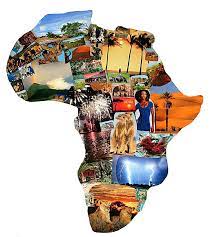Safeguarding Africa's Eco-Heritage: A Synergistic Approach Integrating Indigenous Knowledge and Sustainable Strategies
Africa's unparalleled biodiversity and rich cultural heritage are imperiled by the escalating pressures of rapid societal development. This necessitates a transformative paradigm shift towards sustainable natural resource management. This article posits a synergistic approach, integrating Traditional Ecological Knowledge (TEK) – defined as the cumulative body of knowledge, practices, and beliefs, adaptively evolved and intergenerationally transmitted by indigenous and local communities – with contemporary conservation strategies. We will explore the application of various conservation principles and models within the framework of this synergistic approach, highlighting the pivotal role of indigenous communities in achieving effective eco-heritage preservation.
1. Community-Based Conservation (CBC) and Participatory Planning: Effective conservation planning necessitates a paradigm shift from top-down approaches to collaborative and participatory strategies aligned with the principles of CBC. This model empowers local communities, fostering a sense of ownership and responsibility for resource management. Successful implementation hinges on respecting indigenous rights, acknowledging the inherent value of TEK, and facilitating open dialogues and knowledge exchange between traditional custodians and scientific experts. Participatory Geographic Information Systems (GIS) mapping, documentation of traditional resource management techniques, and integration of indigenous perspectives into protected area management plans are crucial components of this process. For instance, integrating traditional fire management practices in savanna ecosystems can foster biodiversity conservation by mimicking natural ecological processes, contrasting with the often detrimental effects of arbitrary fire suppression.
2. Capacity Building and Intergenerational Transmission of TEK: The sustained relevance of TEK necessitates its effective transmission across generations. This requires strengthening educational curricula to incorporate indigenous knowledge, fostering environmental stewardship and cultural pride among youth. Establishing environmental education centers that seamlessly blend traditional and modern teaching methodologies is paramount. Investing in training programs empowering indigenous communities to lead in resource monitoring and management builds local capacity, accelerating conservation initiatives. The principles of social learning, where knowledge is co-created through participatory processes, are central to this endeavor.
3. Sustainable Livelihoods and Economic Incentives: Achieving sustainable development necessitates addressing the socio-economic needs of local communities. Supporting traditional industries, such as craft production and sustainable ecotourism, provides crucial economic incentives for conservation. Responsible ecotourism can generate revenue streams for local communities, creating a direct link between economic benefits and conservation efforts. Fair trade principles, guaranteeing equitable compensation for community products, enhances economic resilience and fosters participation in conservation initiatives. Furthermore, Payments for Ecosystem Services (PES) mechanisms offer additional avenues for incentivizing sustainable resource management by compensating communities for the ecological services they provide.
4. Robust Legal Frameworks and Policy Harmonization: Effective conservation requires strong legal frameworks that protect both natural resources and cultural heritage. This involves developing and implementing legislation that recognizes indigenous land rights, safeguards TEK from exploitation, and penalizes environmental degradation. Crucially, legislative processes must be inclusive and participatory, reflecting the needs and concerns of the affected communities. Harmonizing national policies with international agreements like the Convention on Biological Diversity (CBD) and the UN Declaration on the Rights of Indigenous Peoples provides a robust legal foundation for sustainable development.
5. Technological Integration for Resource Monitoring and Cultural Preservation: Modern technologies, such as GIS and remote sensing, provide invaluable tools for monitoring and managing natural resources. This empowers indigenous communities to participate actively in tracking deforestation, poaching, and other environmental changes on their ancestral lands. Digital archiving and documentation of TEK preserve valuable cultural heritage, mitigating knowledge loss and making it accessible to future generations. Digital platforms can create virtual museums and interactive spaces showcasing indigenous knowledge and cultural heritage, fostering global appreciation and understanding.
6. Global Collaboration and Knowledge Exchange: Addressing the global challenge of conservation requires concerted international collaboration. Partnerships between governments, NGOs, research institutions, and indigenous communities facilitate the exchange of best practices, technologies, and resources. This fosters mutual learning, strengthens capacity, and accelerates progress in sustainable resource management. International collaborations are also instrumental in developing more effective and culturally sensitive conservation policies.
Conclusion and Recommendations: Preserving Africa's eco-heritage mandates a multifaceted approach that values and integrates TEK. Empowering indigenous communities, strengthening legal frameworks, promoting sustainable livelihoods, and leveraging technology are key elements of this approach. Future research should focus on longitudinal studies evaluating the long-term impacts of participatory conservation strategies, quantitative analyses of the economic benefits of TEK-based initiatives, and innovative methods for bridging the knowledge gap between traditional and scientific approaches. A collaborative, community-driven approach, respecting local ownership and indigenous knowledge, offers a significantly more successful and sustainable pathway to conservation than top-down, externally imposed models. This synergistic approach promises a future where African communities thrive in harmony with their environment, safeguarding their rich cultural heritage for generations to come.
Reader Pool: Considering the complexities of integrating TEK into modern conservation strategies, what innovative mechanisms could further enhance the effectiveness and cultural sensitivity of such collaborations?



